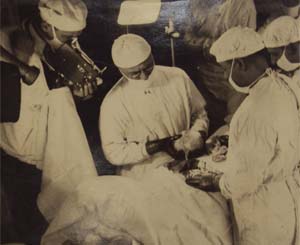
I first became interested in Jacob Sarnoff's films because they seemed so strange. In this film, Circulatory System (1924), Sarnoff has removed the veins from a day-old infant, mounted them on a board, and used a system called "pneumo-viscera" to inflate them with air.

The more I looked at Sarnoff's films, the more interested I became in the way that Sarnoff alternates between the mechanical reproduction of reality and simulations or embellishments of the human body.

Jacob Sarnoff made hundreds of films depicting bodily process and operative procedures. He wrote that he spent all his money on filmmaking, except what he needed to live on and support his family.
Depth Perception: Jacob Sarnoff and the Problem of Anatomical Legibility
Doctors have been making films for each other almost since the advent of the medium. They've made surgical films to demonstrate procedures, films of patients to demonstrate symptoms, and educational films to train new physicians. This project investigates these films to see what they can tell us about medical sight.
You wouldn't think it would be so hard to make a film of the body's interior; can't you just open the body up and start filming? But as I show in this project, making anatomical and surgical films turns out to be surprisingly complicated.
For one thing, medical filmmaking has been very controversial. At various points in the twentieth century, the medical profession has condemned films as too self-promotional or too theatrical.
For another thing, it turns out to be quite difficult to get shots of the body's interior. The inside of the body is too messy, too dark, and too obscure to see easily. This difficulty has led to a surprising array of implements for medical filmmaking, including pedal-operated cameras and mirrored operating theaters
Finally, when physicians were able to film the body's interior, what they got on film wasn't always what they saw. Interestingly enough, animated images often seem to bear a closer resemblance to surgical sight than do actual flesh and blood.
Jacob Sarnoff (1886-1961) was a pioneering physician-filmmaker. Many of his films are in the archives of the National Library of Medicine, in Bethesda, Maryland. In this project (a dissertation chapter) I take a look at the history of medical filmmaking through the lens of Sarnoff's career. I talk about who Sarnoff was, why I think his films are so interesting, and why I think they look the way they do.